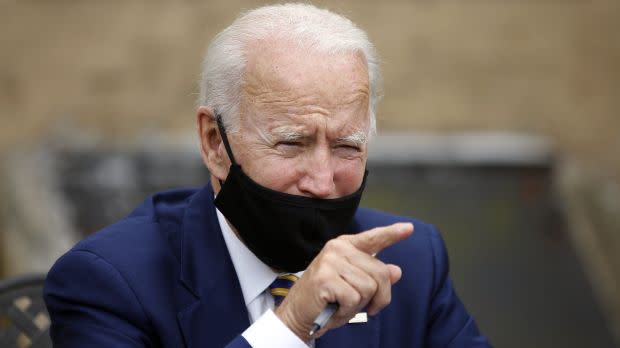Can we trust the 2020 US presidential polls?

The US presidential election is three months away, and the polls and forecasts are rolling in. Based on surveys and economic indicators available on Aug. 3, The Economist predicts Joe Biden will get 54% of the popular vote and Donald Trump 46%, which means they give Biden 91% chance of winning the presidency. The website FiveThirtyEight has Biden up 50% to 42% in national polls. A New York Times polls shows Biden up by at least six points in six key battleground states.
But we’ve been here before, right? In 2016, presidential polls and forecasts showed Hillary Clinton would beat Donald Trump, and we know what actually happened. The number crunchers misread the public mood. Trump’s support was deeper than any of them understood. The polls cannot be trusted.
This is the narrative many people still hold about polls and the 2016 election, and while there is some truth to it, it’s missing a lot of nuance. Most pollsters did believe Clinton would win, and there were methodological errors. But the idea that polls are useless because of what happened in 2016 is just wrong. If you want to pay attention to polls during the 2020 presidential cycle, you should go right ahead.
In some ways, the 2016 polls were actually extremely accurate. The New York Times and FiveThirtyEight both used polling to project Hillary Clinton would win the popular vote by three percentage points. In the end, Clinton won by about two points. Not too shabby. In fact, the accuracy of national polls in 2016 was no worse than average compared to the past several decades.
But in addition to projecting the national vote, prognosticators also offered a probability Clinton would win. This is where, to varying degrees, things went wrong. FiveThirtyEight gave Clinton a 71% shot, the New York Times 85%, and the Huffington Post 98%.
These projections were undone not by national polls, but by inaccurate polling in a few key states. Although Clinton was heavily favored to win in Michigan, Pennsylvania, and Wisconsin, she lost all three of these states, while over-performing in the rest of the country. There appeared to be two main reasons the pollsters got it wrong in these states, according to New York Times polling expert Nate Cohn. One, late-deciding voters went for Trump in surprisingly large margins. Two, Trump got some people to vote who pollsters weren’t expecting to make the effort, particularly people who had never attended college.
The 2016 presidential election was close enough that these polling errors caused the data analysts to get the prediction “wrong.” Wrong is in quotes because all of the prognosticators gave Trump some chance of winning, so it’s probably more accurate to say they were overconfident.
It is true that 2016 kicked off a downward trend for polling accuracy because fewer people now answer their phones when called for surveys. But even this doesn’t seem to be a problem. For the 2018 congressional election, polls were actually unusually precise, with estimates almost 20% closer to the final vote than usual. It may be harder to get people on the phone, but the pollsters have been able to adjust their methodology for this problem.
So what’s the lesson for 2020? The main takeaway is that if national polls are close, say within five points, really anything can happen. Although pollsters won’t make the exact same errors they made in 2016, they might make new ones. So it’s best not to assume your favorite candidate will win or lose based on those numbers. If in the end, most statisticians say Trump is up by four points and has a 90% chance of winning, you should take that other 10% very seriously.
But given that polling has historically been pretty accurate, and doesn’t appear to be getting any worse, the 2016 results shouldn’t impact how you look at this data. It is still reasonable to think that whoever is ahead in the polls truly is in the lead. It’s just not a certainty.
Sign up for the Quartz Daily Brief, our free daily newsletter with the world’s most important and interesting news.
More stories from Quartz:
Africa’s largest retailer is pulling out of the continent’s largest economy
Trump’s latest offensive against H-1B visas is an election ploy based on misinformation
